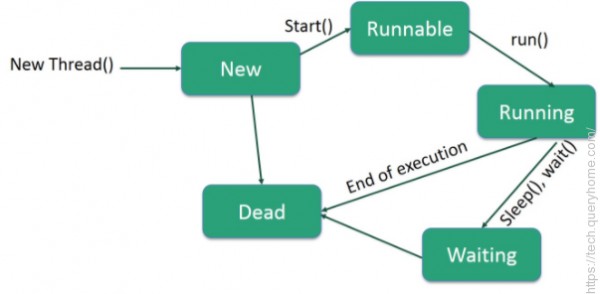Multithreading in java is a process of executing multiple threads simultaneously. Thread is basically a lightweight sub-process, a smallest unit of processing. Multiprocessing and multithreading, both are used to achieve multitasking. But we use multithreading than multiprocessing because threads share a common memory area.
They don't allocate separate memory area so saves memory, and context-switching between the threads takes less time than process. Java Multithreading is mostly used in games, animation etc.
Advantages of Java Multithreading
1) It doesn't block the user because threads are independent and you can perform multiple operations at same time.
2) You can perform many operations together so it saves time.
3) Threads are independent so it doesn't affect other threads if exception occur in a single thread.

Life Cycle of a Thread
Following are the stages of the life cycle −
- New − A new thread begins its life cycle in the new state. It remains in this state until the program starts the thread. It is also referred to as a born thread.
- Runnable − After a newly born thread is started, the thread becomes runnable. A thread in this state is considered to be executing its task.
- Waiting − Sometimes, a thread transitions to the waiting state while the thread waits for another thread to perform a task. A thread transitions back to the runnable state only when another thread signals the waiting thread to continue executing.
- Timed Waiting − A runnable thread can enter the timed waiting state for a specified interval of time. A thread in this state transitions back to the runnable state when that time interval expires or when the event it is waiting for occurs.
- Terminated (Dead) − A runnable thread enters the terminated state when it completes its task or otherwise terminates.
